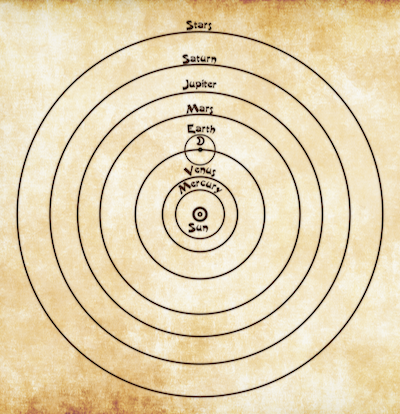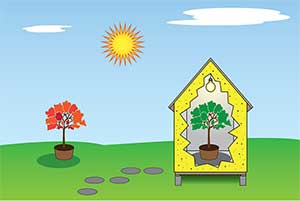What Is Science?
Anyone can think like a scientist.
Science is . . .
Observing the world.
Watching and listening
Observing and recording.
Science is curiosity in thoughtful actionabout the world and how it behaves.
Anyone can have an idea about how nature works. Some people think their idea is correct because "it seems right" or "it makes sense." But for a scientist (who could be you!), this is not enough. A scientist will test the idea in the real world. An idea that predicts how the world works is called a hypothesis.
Hmmm. Is my hypothesis correct?
If an idea, or hypothesis, correctly predicts how something will behave, we call it a theory. If an idea explains all the facts, or evidence, that we have found, we also call it a theory.
"Scientific method" usually means a series of steps that scientists follow to discover how nature works.
These steps will work fine for a school science fair project. But this is not usually the way science actually happens!
From observation to theory
Sometimes the observations come beforethe idea or theory.

This drawing is similar to the one made by Nicolaus Copernicus (published in 1543) and shows the Sun at the center of the solar system.
For thousands of years, people observed certain "stars" wander around the night sky in looping patterns. Finally, in 1514 Nicolaus Copernicus came up with the idea of "Heliocentrism" (meaning Sun centered). He thought the Sun was the center of the Universe, with Earth being one of many spheres orbiting the Sun. That idea explained the wandering patterns of the planets. It also predicted where they would "wander" next. This idea became a theory. Of course, we later improved that theory. After all, the Sun is not the center of the whole universe, but only our own solar system.
Sometimes science happens mostly inside a scientist's head.
Albert Einstein and his theories were like that. It took a long time before scientists were able to test them and show that they were correct.
Science is not just a tidy package of knowledge.
Science is not just a step-by-step approach to discovery.
Science is more like a mystery inviting anyone who is interested to become a detective and join in the fun.
A sample experiment:
Question:
Do maple trees turn red in the fall because the days are growing shorter or because the weather is getting colder?
To find out . . .
First test the shorter days idea. Change the amount of time each day that the tree gets light. Keep everything else around the tree the same. Then, see if the tree changes color.

In this experiment, the amount of light the indoor tree gets is the variable and temperature and amount of water are the controls.
Put a potted maple tree (maple trees do turn red and lose their leaves in the fall) in a shed with artificial sunlight (and no windows). Give the tree less light each day—in this case, two minutes and a few seconds less, just as if it were outside during the fall. Keep the temperature constant and give the tree the same amount of water each week.
What if the leaves turn red on the indoor tree just as they do on the outdoor trees?
What would that mean? It would mean that it must be the shorter periods of light that is making the leaves turn red.
But what if the leaves do not turn red on the indoor tree?
In that case, the amount of light is not the cause, or at least not the main cause, of the trees outside turning red. Our scientist might then design another experiment with temperature as the variable, holding light and water constant, as the controls.